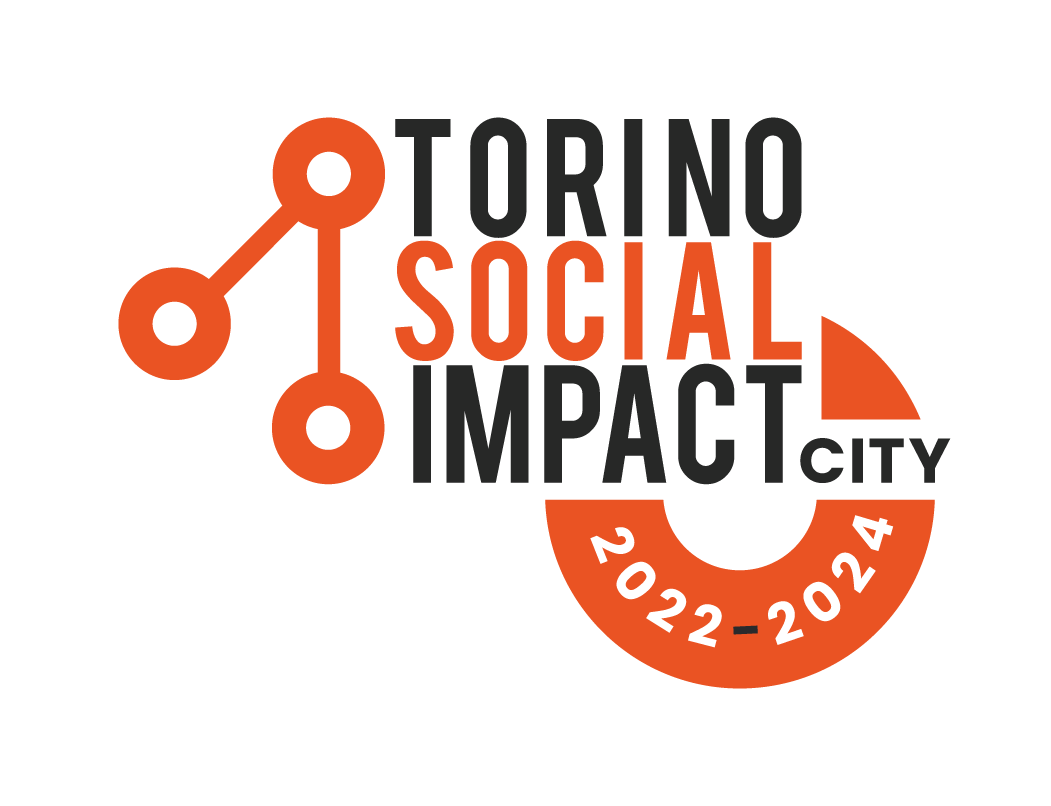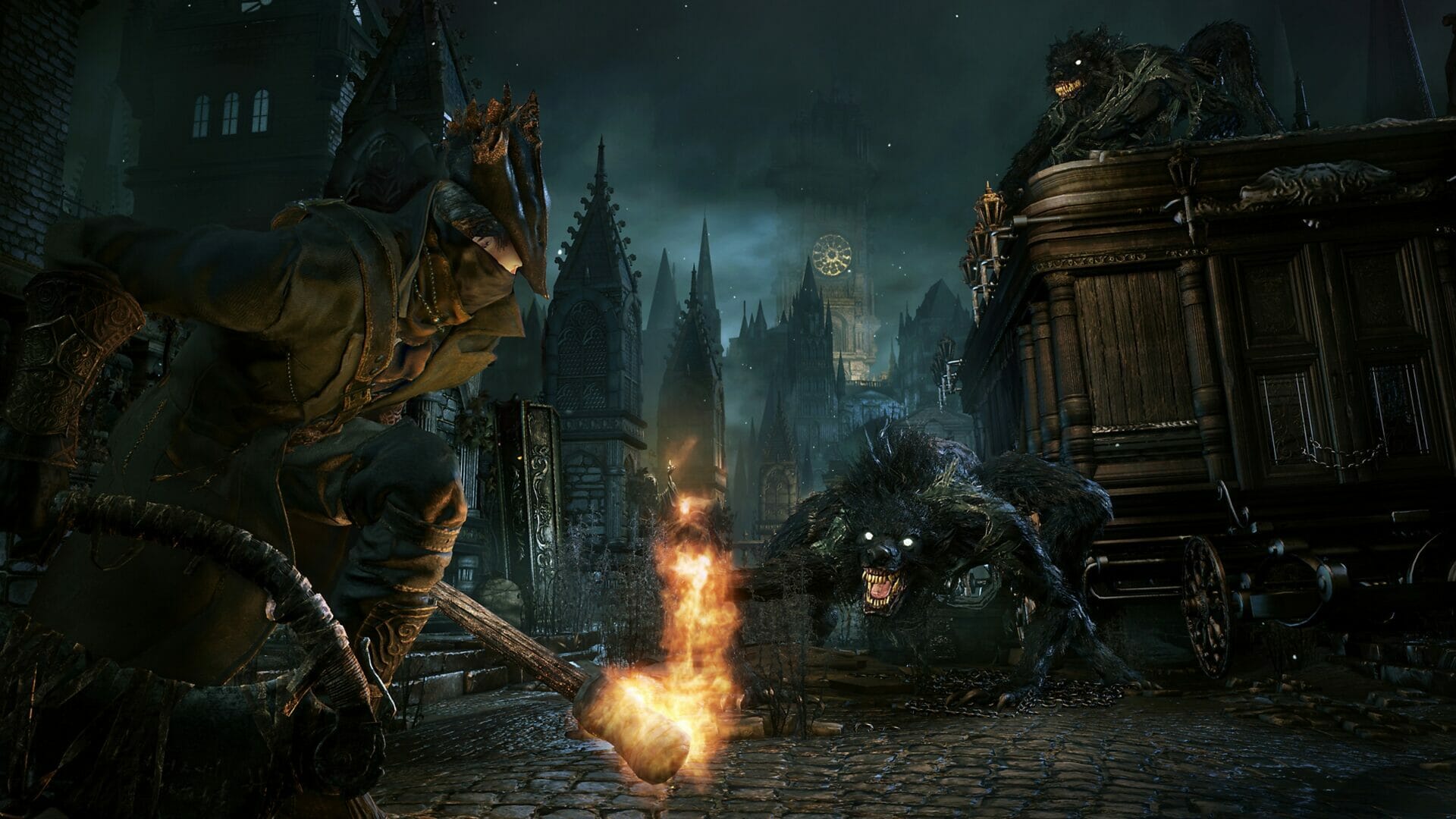
Pathologic 2 | The epidemic video game which experiments the dissolution of language
Game designer
Studio
Art Director
Lead Composer
Publishing Year
Type of game
Genre
Subgenre
Country
Truth does not do as much good in the world as the appearance of truth does evil.
François de La Rochefoucauld
Pathologic 2, by Ice-Pick Lodge, is a video game that defies any conventional definition. It’s not a sequel, not a remake, and not even exactly a game. Rather, it could be defined as a narrative experiment that uses the video game medium to dissolve player expectations and deconstruct the interactive structures upon which much storytelling language is built.
The protagonist, Artemy Burakh, is a doctor who returns to his hometown coinciding with an epidemic outbreak. But this mundane premise hides a much more complex mechanism: the player is not a hero, not even a true agent. They are a witness forced to fail, to suffer, to succumb.
- The Steppe and the Train
- Disease and metaphor: the epidemic as a philosophical system
- The duality of time and the pressure of space
- Who plays and who is played: deconstruction of agency
- When Death is part of life
- Metanarrative Polyhedron
- The Theater: staging lives in Pathologic 2
- Gameplay as a means of expression
- The trauma of entertainment
- Remake or Sequel
The Steppe and the Train
The theme of sacrifice is at the center of the experience. As mentioned, the player takes on the role of a doctor, better known as the haruspex. He is the son of the only local doctor, Isidor Burakh, and has spent recent years away from his hometown in the capital, where he trained as a surgeon.
One day, he receives a letter from his father informing him of great difficulties. Upon arriving in town, three locals try to kill him. He somehow manages to handle the attackers and, shortly after, encounters figures wearing skeletal bird masks, similar to medieval plague doctors. The mysterious figures reveal to him that the town’s inhabitants suspect him of murdering a critical resident and attack him in revenge.
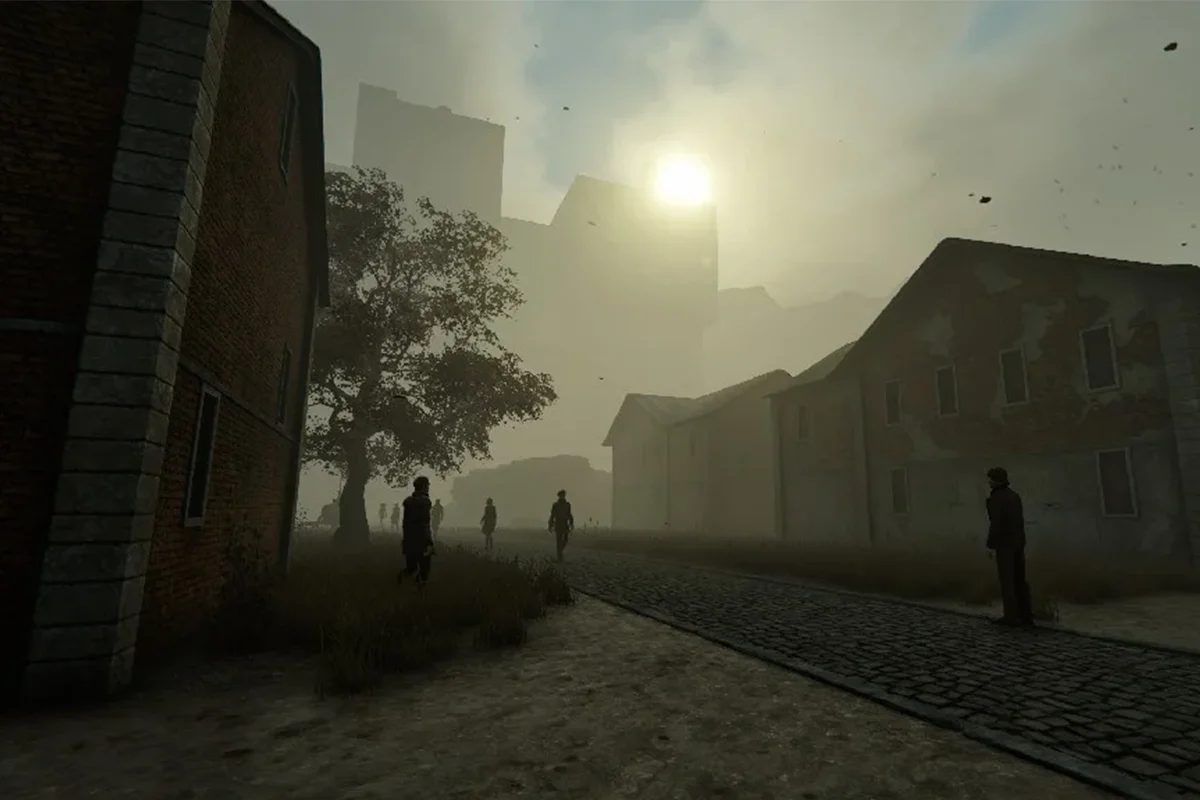
Set in a fictional early 20th-century village that blends pre-1917 revolution culture with steppe culture, the player has 12 days to prove their innocence while simultaneously fighting a lethal epidemic (the sand plague). Every decision, every action, or inaction has a cost, creating a gameplay experience where mere survival becomes a constant challenge. As the pandemic progresses, resources become increasingly scarce, prices skyrocket, and the players might be forced to commit morally questionable actions to survive. The collapse of the formal economy leads to an alternative moral economy, where the market no longer determines the value of objects but their immediate utility for survival.
Pathologic 2‘s narrative refuses linearity and objectivity. Instead of a coherent story, the game offers a kaleidoscope of perspectives in constant conflict. The people simultaneously portray Artemy Burakh as a doctor, son, stranger, savior, and threat. Every character has their version of events, and none is definitive.
This fragmentation explores the complexity of perception: truth is not monolithic but a collection of partial, contradictory views.
Disease and metaphor: the epidemic as a philosophical system
Pathologic 2 isn’t merely a remake of its predecessor. It’s a philosophical and thematic re-elaboration that explores the meaning of human resilience, sacrifice, and community. The infection metaphor expands beyond the narrative, reflecting the fragility of social structures and the interconnection between society’s members.
The town itself is a living creature, with the player in constant dialogue between immersion and alienation. The epidemic takes place in a small remote microcosm, lost in the eastern steppe, and through the Railway Station, it receives vital resources, becoming an Ark that attracts brilliant minds from across Russia. Integrating steppe folklore and local cultural traditions gives collateral and unfathomable depth to the game world. The details about totemic animals, healing rituals, and the philosophy of the seeds of the steppe are a window into a coherent and layered belief system. The atmospheres are characterized by a skillful use of the color black, inspired by the art world.
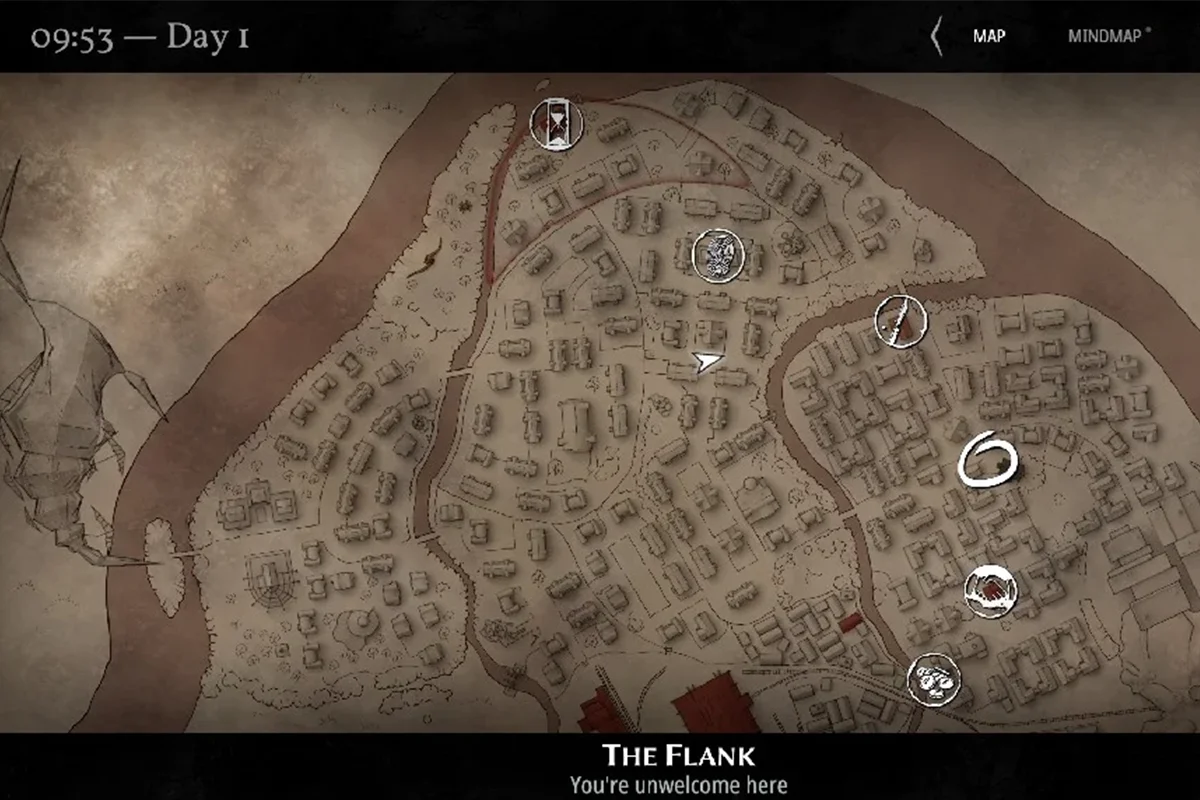
This labyrinthine village is the primary setting that the protagonist will (never fully) learn to know during the days of gameplay. The epidemic in Pathologic 2 transcends the narrative dimension to become a complex symbolic device.
The player isn’t fighting against an external enemy. It is an integral part of a sick system whose logic they cannot fully comprehend.
The duality of time and the pressure of space
An often undervalued element is using time as both a resource and antagonist. Each day is a struggle, especially against the relentless advance of hours, forcing players to prioritize moral choices, missions, and personal needs. This system intensifies the narrative urgency and evokes a sense of inevitability, amplifying the game’s existential message: players cannot save everything, and every decision causes an irreversible loss.
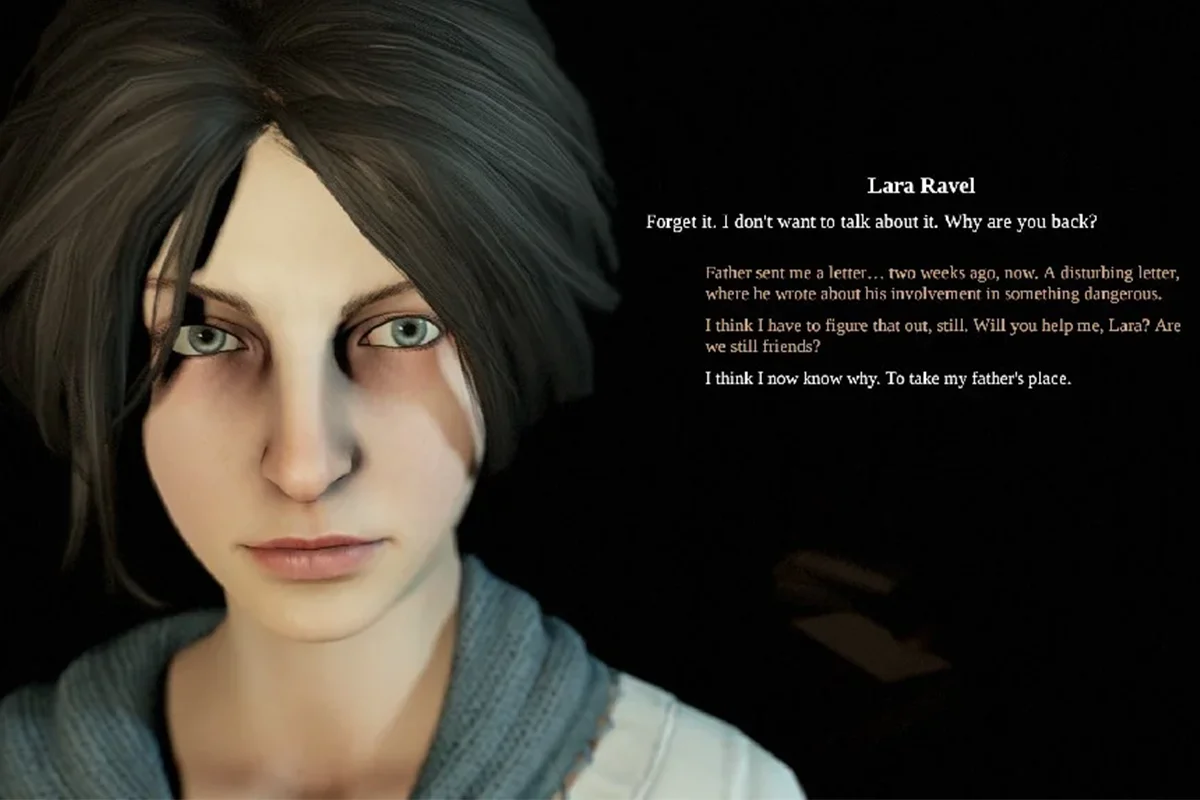
Time modifies relationships and material costs and opens and closes narrative arcs without warning the player. It transforms the entire map as the plague spreads. Quarantine consumes entire areas, while fog devours streets, revealing and concealing irrational architectures and spectral characters. The work’s temporal structure embodies what could be defined as the temporality of catastrophe.
There is a constant sense of being always “too late” to prevent disaster but simultaneously obligated to act. Conversations follow narrative branches that, once abandoned, do not allow players to re-explore them. This unidirectional structure, combined with the deliberately cryptic language of characters (sometimes directly incomprehensible), creates a sense of incompleteness and ambiguity that mirrors the protagonist’s condition: an outsider trying to decipher a reality that constantly eludes him.
Who plays and who is played: deconstruction of agency
I despise trickery, but if we ourselves are to suffer deception, then our hands are no longer tied.
Clara, in the game’s introduction
Survival mechanics are at the center of frustration. While the game invites exploration and immersion in the plot, players must constantly manage hunger, thirst, sleep, and immunity indicators. This system, designed to convey a sense of oppression and desperation, often becomes an obstacle to narrative and immersion. Deliberately. Essential items are scarce and expensive, and the need to barter or loot to survive transforms the experience into a cycle of micro-management that many find exhausting. Needless to say, combat is barely possible. Wooden and slow, often, a single hit received can prove fatal.
Matter of fact, one of the most radical aspects of Pathologic 2 is indeed its demolition of the concept of agency. At every step, the game questions the player’s freedom of action, a fundamental pillar of the video game medium. Objectives are fluid, consequences escape any attempt at prediction, and every decision seems to lead to some form of compromise or loss. While contemporary games swing between casting the player as a spectator or an omnipotent protagonist, Pathologic 2 assigns the role of an extra, forcing them to negotiate with a world that resists being constantly tamed. The concept of mission is shattered.
This deconstruction of video game agency becomes a broader reflection of individual freedom within complex systems. As the game progresses, the boundary between the player and the character becomes increasingly thin. It’s no longer about playing a role but living a shared transformation experience.
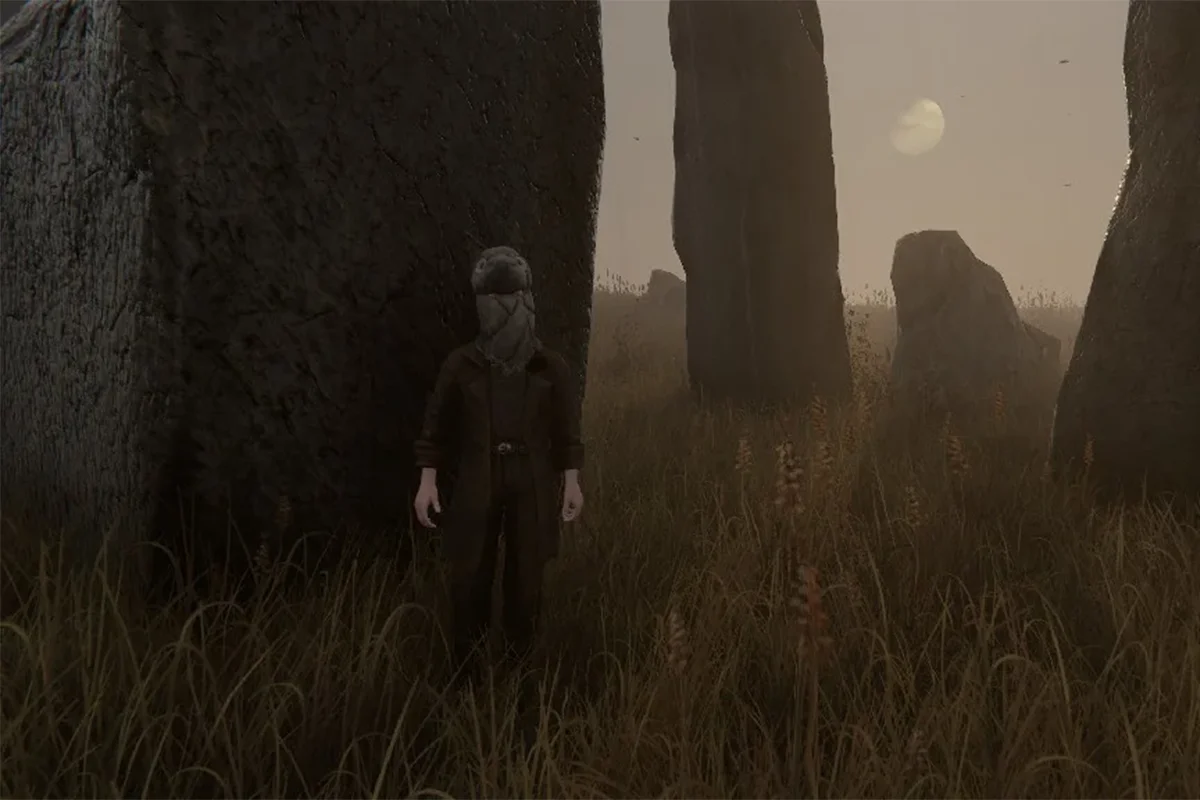
Ice-Pick Lodge, 2019
When Death is part of life
As is now clear, in Pathologic 2, failure is not a temporary condition to avoid but the very structure of the experience. Traditionally, video games reward progression and victory. Here, instead, defeat is an intrinsic component. Another game that creatively explored death as an integral gameplay element was Celeste by Maddy Makes Games. In this indie game, players overcome death as an obstacle through endless attempts. Every failure brings the player closer to mastering the controls, while instant respawns encourage experimentation and resilience. The message inside the gameplay is personal growth. In Pathologic 2, however, it is a punishment that teaches the inevitability of suffering and the weight of choices.
Every player’s attempt leads to failure: characters die, resources deplete, and choices fall short. But this failure isn’t frustrating; it’s illuminating. The plot even changes after the character dies a precise number of times. Additionally, there’s a complex malus system. Each failure isn’t just temporary but leaves a permanent mark on the protagonist through the reduction of vital statistics. This mechanism, persisting even when a previous save is loaded, turns every death into a permanent trauma that the player carries, adding narrative and ludic weight that intensifies the sense of desperation and precarity.
Death in Pathologic 2 is both a punitive mechanism and a process of existential transformation. It is a return to wandering in Samsara, halfway between déjà vu and theatrical performance. Through this series of small deaths, the player, like the protagonist, undergoes a profound metamorphosis.
Metanarrative Polyhedron
All the world’s a stage, and all the men and women merely players.
Mark Immortel to the protagonist
Pathologic 2 wants the player to feel overwhelmed, always on the verge of collapse, and constantly aware of letting someone die. It thus transforms the gaming experience into an exercise in managing failure and inevitable loss. The game’s central message could be summarized in the paradoxical necessity of dying (and letting die) to continue living. As the epidemic progresses and spreads, the protagonist will be called to correctly diagnose and treat the town’s inhabitants to increase their chances of survival. The impossibility of saving everyone is a lesson in humility and acceptance.
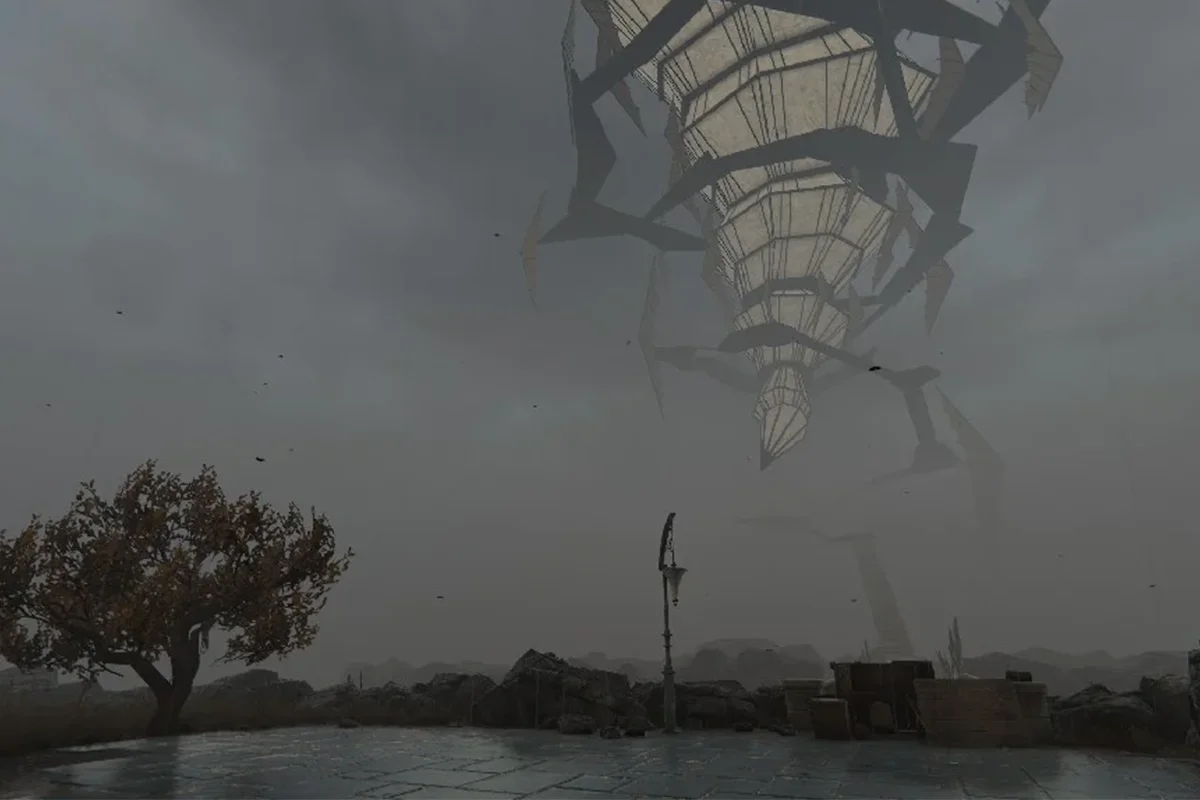
Ice-Pick Lodge, 2019
A peculiar aspect in this sense is the constant inclination toward metanarrative. Conversations with characters aren’t just tools to advance the plot but often offer reflections on the game’s themes themselves, on the relationship between creator and player, and the limitations of the video game medium. The meta-comments inserted in dialogues and the protagonist’s awareness of their role in a more extensive system create an experience that blurs the boundary between game and performance art. Towards the end, the Devisers take on the role of pure and direct commentary, acting as clear messages from the developers and creating a direct dialogue between them and the player.
The Theater: staging lives in Pathologic 2
There are no other crimes. There’s no such thing as evil, murder, torture, or violent abuse. The only real crime is betraying someone who trusted you. So everyone who has that kind of confession, please stand to the left. Your punishment is death. End of discussion.
Aglaya, during the seventh day’s pantomime
The game has many half-symbols and emblematic figures that can have multiple meanings and leave room for endless speculation. The Theater, which often appears in dreamlike scenes or otherwise, represents a crucial element. The pantomimes provide summaries of events in the game or previews of future events. Shows take place in the Theater every night from 00:00 to 07:00.
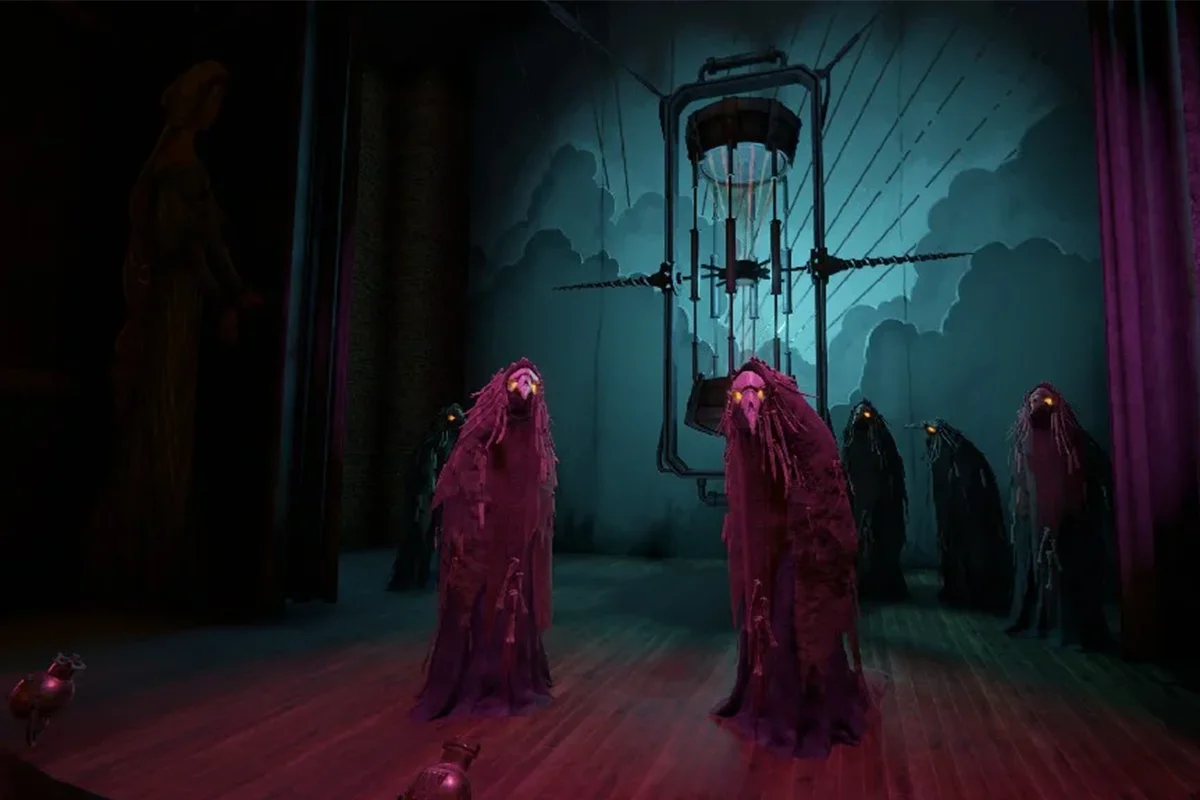
Far from being a simple meta-narrative device, the Theater configures itself as a truly alien entity descended upon the town, with its history and complex characters. In this context, the player doesn’t simply interpret Artemy Burakh, but an Actor called to play his role. This distinction is fundamental to understanding the depth of the narrative, especially considering figures like Mark Immortell (the theater director) and the Traveler (who represents Death itself), who aren’t simple meta-narrative references but characters with their motivations and stories.
The key to understanding Pathologic lies in recognizing that there is more than one story, developing on multiple levels, each with its own rules and meanings. The Theater seems to have the power to modify, reset, find, and create new instances of an event to learn from its variations.
Gameplay as a means of expression
This is a game about boundaries. Humans transcend their limitations, and the metamorphoses that may await them on that journey: a blood cell or an udurgh, a doll or a living creature, a slave to the circumstances, or the setter of new laws.
Our town is a unique example of a utopia made real. It’s the cornerstone, the foundation of the game’s entire conflict: a cataclysm has befallen the worthiest.
Pathologic 2 artbook
Pathologic 2 doesn’t aim to be pleasant or rewarding in the traditional sense. It is rather stimulating, provocative, and deeply reflective, challenging the player to find meaning in a hostile reality devoid of easy answers.
As stated by the developers themselves:
Pathologic 2 was created to give the impression of being almost impossible to complete.
Even the game’s technical limitations, such as frequent loading screens and slowdowns, seem to merge with the narrative intent. The moments of forced stasis while moving between city districts can transform into moments of pure tension, where the player remains at the mercy of events while the game continues to run invisibly behind loading screens.
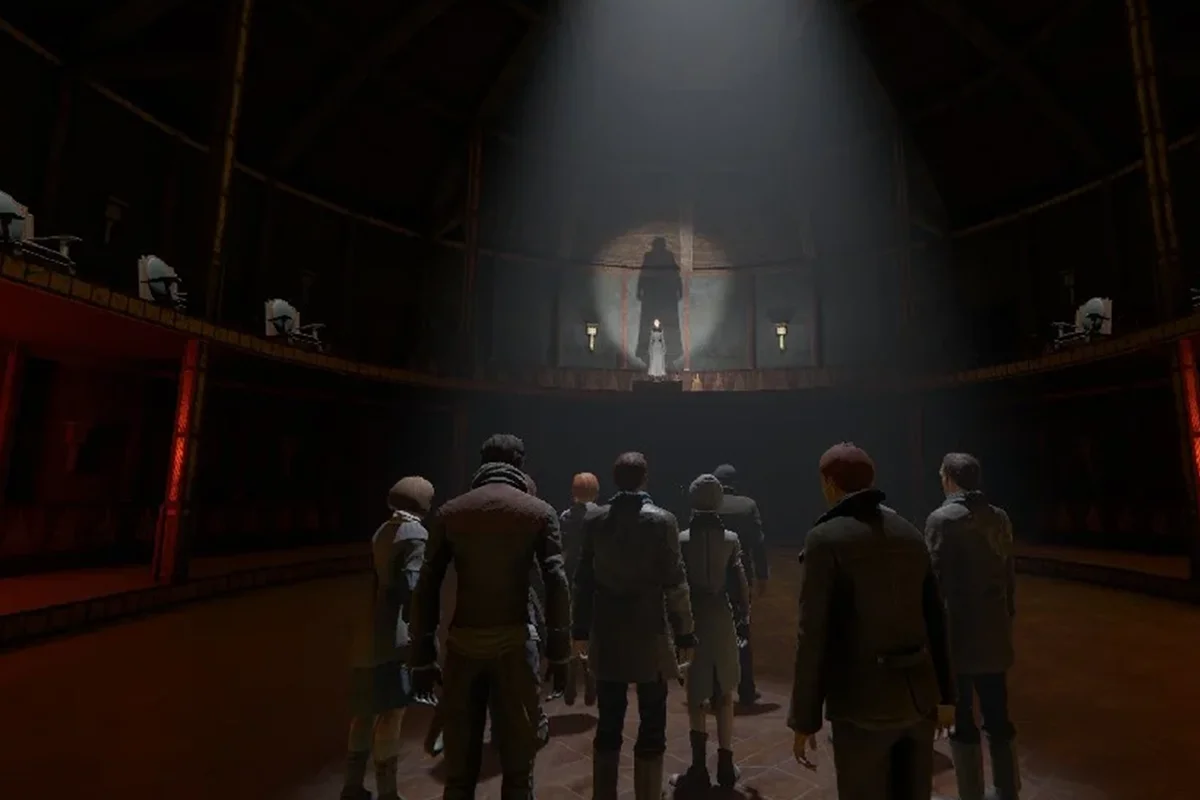
The soundtrack and audio design complete the experience. Every sound, from ritual music to the disturbing gurgle of industrial noises, builds constant tension. The city communicates through sound, conveying its state of health and decay in subtle but powerful ways. A synesthesia that amplifies the emotional impact.
The trauma of entertainment
There are fine things, old boy, which are more brilliant when unfinished, than when finished too much.
City Inhabitants
For the contemporary player, accustomed to systems of immediate gratification and a clear correlation between action and result, the experience of Pathologic 2 can be deeply destabilizing. Conventions developed over decades of medium evolution (from quest systems to progression mechanics) are deliberately subverted.
The game operates as a form of deprogramming of ludic reflexes. Every attempt to apply traditional gaming strategies is systematically punished or rendered ineffective as if the game forces the player to confront their automatisms and expectations through ludic trauma (similar to what The Stanley Parable does, albeit in a different form).
It’s like being suddenly deprived of one’s mother tongue and having to communicate from scratch in an alien semiotic system. The impossibility of “optimizing” one’s path, the constant feeling of being late, the irreversibility of choices: everything contributes to creating a state of anxiety.
One of the most profound effects is the forced learning of powerlessness. The player must abandon the illusion of total control typical of video games. It has to accept a much more limited and human role.
This is how Pathologic forces a redefinition of what constitutes video game pleasure. No longer based on achievement and progression but on understanding and accepting one’s limits. It’s a pleasure more akin to that of literature or auteur cinema: not immediate, but deep and transformative.
The player must process the grief of the omnipotent video game hero figure. Each symbolic death of the protagonist is a form of processing ludic grief.
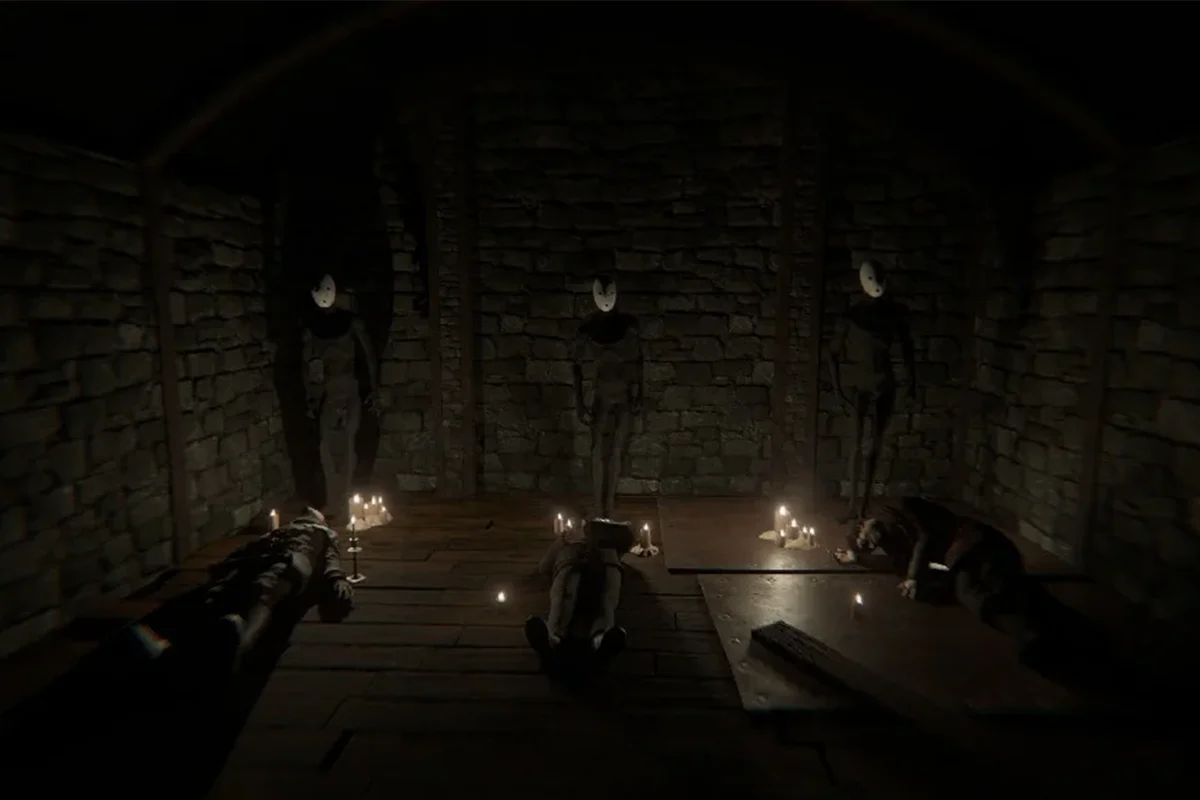
Ice-Pick Lodge, 2019
Remake or Sequel
Pathologic 2 is a unique experience in its genre but deeply polarizing both for its innovative ideas and problematic execution.
Ice-Pick Lodge was founded in 2002 by Nikolay Dybowski. The original team began working on the first Pathologic with very limited resources, creating the game in almost domestic conditions. The studio has since gained notice for its unconventional approach to video game development.
The first chapter, released in 2005, distinguished itself through its almost brutal difficulty and oppressive atmosphere, leading many to define it as a suffering simulator. Although some aspects appear dated today, the game has left an indelible mark on the video game industry, becoming a true cult classic.
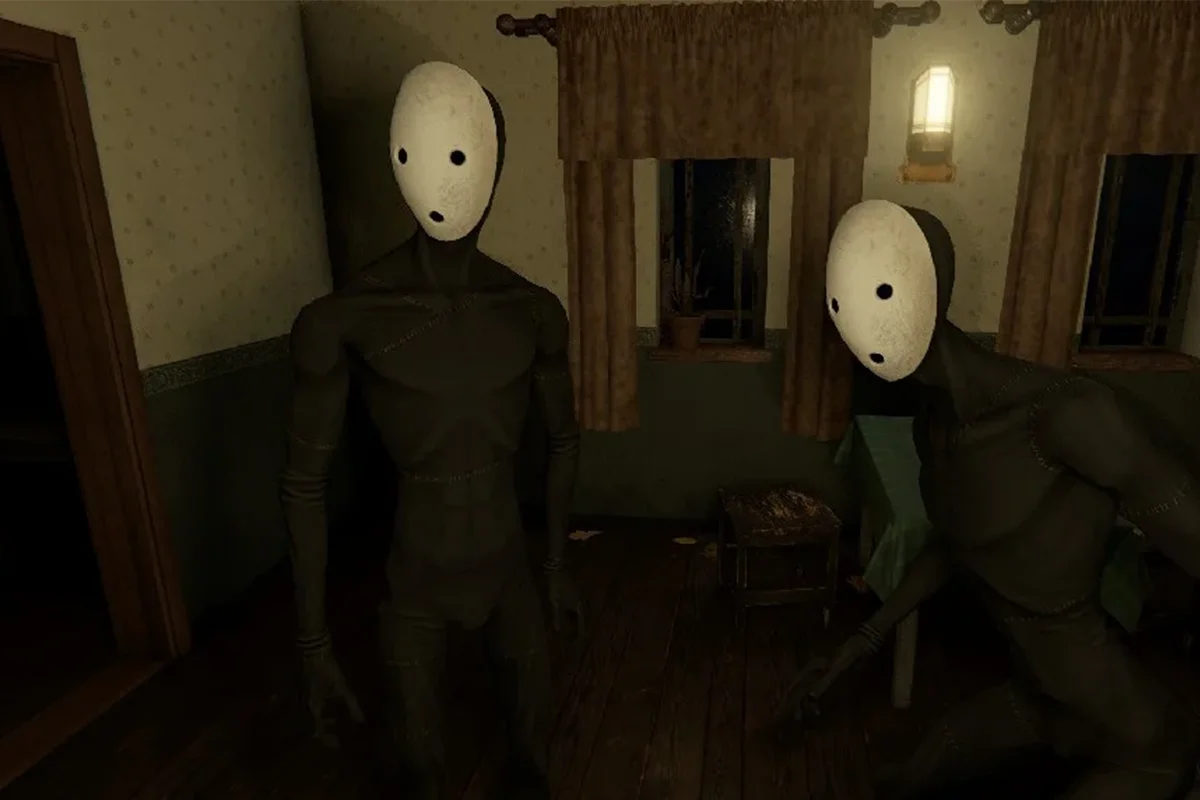
Ice-Pick Lodge, 2019
Yet, even this story and its meaning could be reinterpreted in a performative act with the sequel’s release on March 17th and now wishlistable on Steam. From the launch trailer, we learn that “This is what he thinks the story is. What it is supposed to be. What it has always been,” promising an exploration of time by introducing the ability to travel forward and backward through it. The prologue demo, Pathologic 3: Quarantine, states:
Bachelor’s story is told through his subjective lens and through the lens of his persecutors. Did he really do (or fail to do) all the things he is accused of? Can he fix his own story by going back in time and making different choices? In Quarantine, watch how this non-chronological storytelling begins.
Tag
Buy a ☕ for Hypercritic
